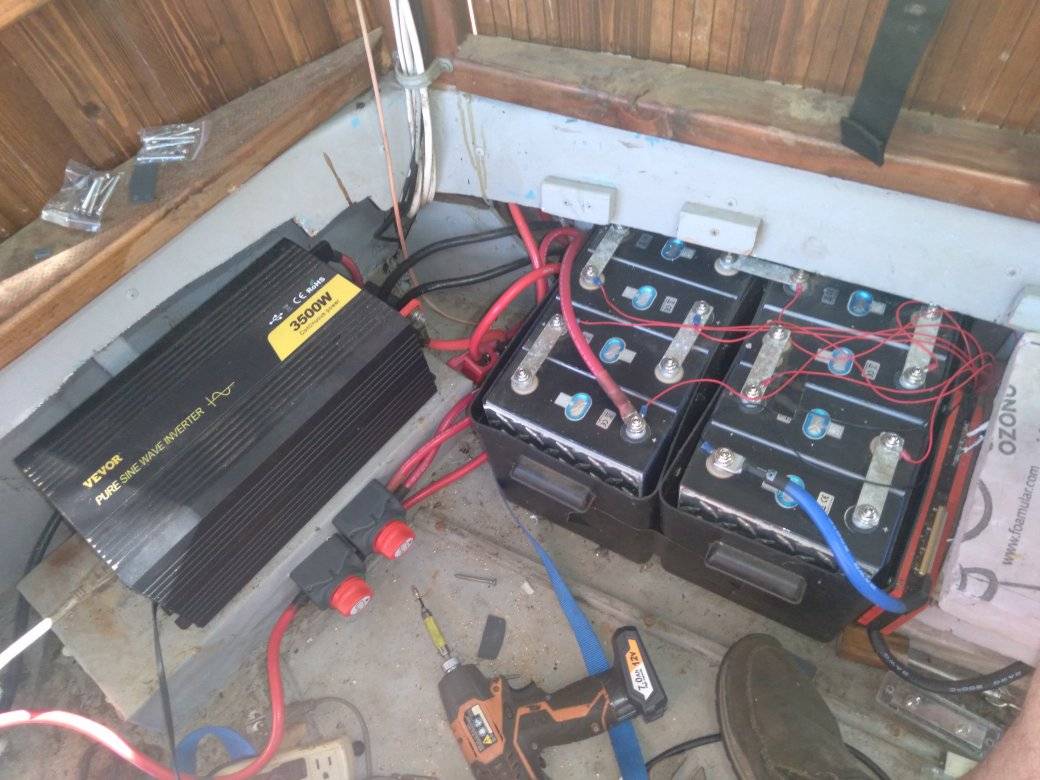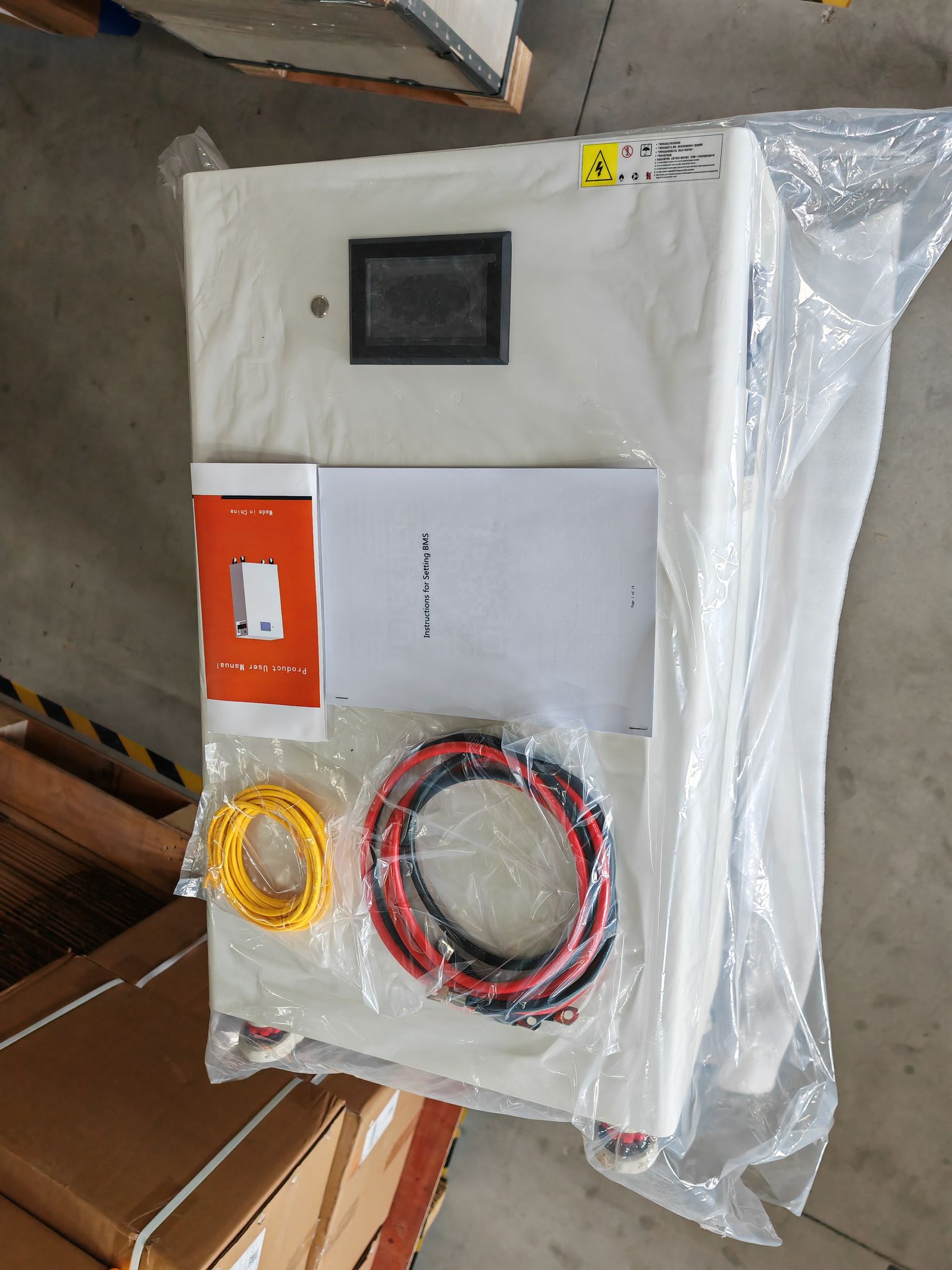I have been thinking a lot about batteries, lately. No matter how big your battery pile is, it always seems you need more. And they ain’t cheap, as we say in the South.
***Safety Note: Batteries can make sparks if you short them. Lithium-family batteries can make really awesome sparks if you short them. Don’t. Watch your tools, maybe insulate them. Wear safety glasses to keep balls of molten metal out of your eyes. Don’t use Lithium Ion batteries because they burn really well.***
I love spring and fall, the few weeks in Northwest Florida when we don’t need much in the way of heat or cooling. I am fully off grid, then, with no complaints from the battery pile. Spring has sprung and bounced away, leaving us with cloudy days in the 90s. That’s a bad mix for solar. Add to that, my batteries are about 9 years old, at the Solar Shed. The big forklift batteries are no fun to water and when they get a little puny, the diesel generator has to run for hours to get them to a boil at 62 volts. The batteries come out refreshed, but I’m out some bucks for fuel.
The Sun King’s (my solar-powered launch) retrofit to Lithium Iron Phosphate (LFP or LiFePo4) batteries has me convinced that they are the way to go. Price has plummeted for LFP cells, so now LFP batteries are very competitive in price with lead acid batteries. Add in the low maintenance and longevity, LFP is the clear winner when battery shopping. It still ain’t cheap.

And there may be booby traps in shopping for a “deal”. At the low end of the LFP budget scale, you have build-your-own batteries from cells. (See photo, above) Of course, every seller claims his cells are “new” and “Grade A.” That may or may not be true, especially with Chinese sellers. Many cells offered are second-hand, removed from street lights or other battery equipment. You can get a good deal on good cells from a good seller, doing direct import from China. Maybe. You have to make a good purchase and wait. And hope. A friend was successful in a couple of 100 cell buys and shared a few to build the batteries in Sun King. That was “only” $2500 for my 16 cells. Beyond the price of the cells, you have to get a Battery Management System (BMS) to keep from destroying these finicky things. Selecting a BMS is a bit of an art. There are other things you need to know. For one, know yourself. Are you ready to play this game?
Next up the ladder is the packaged battery that looks like the one in your car. The best price point on these is the 12v, 100ah models. (LFP voltages are a little bit higher) Before buying any of these online, check for reviews and YouTube videos on this specific maker. The names are all new to you, not like Diehard, Interstate, or Everstart, where you kind of know what to expect. Some people have been disappointed and the more adventurous who have opened them up have found a few tiny cells and ground cement in the case. No kidding, there are counterfeits.
Then, there’s knowing how to use them. If you need 24 or 48 volts, which are better choices for larger systems, you might be better off springing for the more expensive (per watt) 24 and 48v batteries. Numerous users have given glowing reports of their 4 new LFP batteries in series, only to be grumbling about them 6 months later. Most BMS units do cell balancing. LFP cells get out of sync and the battery can seem dead, but the balancer keeps them equal. Well, the balancer in THIS battery can’t balance THAT battery, or another, so suddenly you have what seems to be a dead battery. You need an external balancer to keep the 2 or 4 batteries on the same track. People are just catching on to this. Really, lead batteries do this, too, and that is why I have to run the Kubota on my batteries…that and to shake out the sulphation. You do not want to use overcharging to balance your LFP batteries. Seriously.
At another level up is the rack-mount battery. They cost more, but look a little less like a high school science fair project. They have just enough of a mad scientist look to them to impress your friends.
Finally, there is the “power wall”. Tesla owns the term Powerwall, but it is such a cool term that it has quickly gone generic. The actual Tesla unit is more than a battery. There is not much battery there, but there is a lot it can do. They are very expensive. My neighbor, Brad, has 3 of them. The more generic devices are mostly batteries. They come in the form of a slick, slim unit that mounts on the wall or a box on wheels that looks like a piece of office furniture. I am amused by the ads that some makers put out, showing them in the living room. If ya got it, flaunt it, I suppose.

It is awkward in my current circumstances. My lead batteries are OK, but not great, and the conventional wisdom is that you can’t mix lead and lithium. They also say you can’t mix flooded lead (FLA) and sealed lead (SLA and AGM), but I have been doing it for years with carefully selected charge settings. According to the specs, I think lead and lithium can be mixed and I want to experiment with that. I need to expand my equipment room, first.
I’m going to go over some more details about batteries, next time.
Meanwhile, I hear from Roberto that he has some LFP batteries and “power walls.” in the Sun Electronics lineup. I have not been to Miami,to see them and touch, but the spec sheets look good. If you are shopping for LFP, give him a call. He still keeps a good lineup of lead batteries, too.
–Neal
